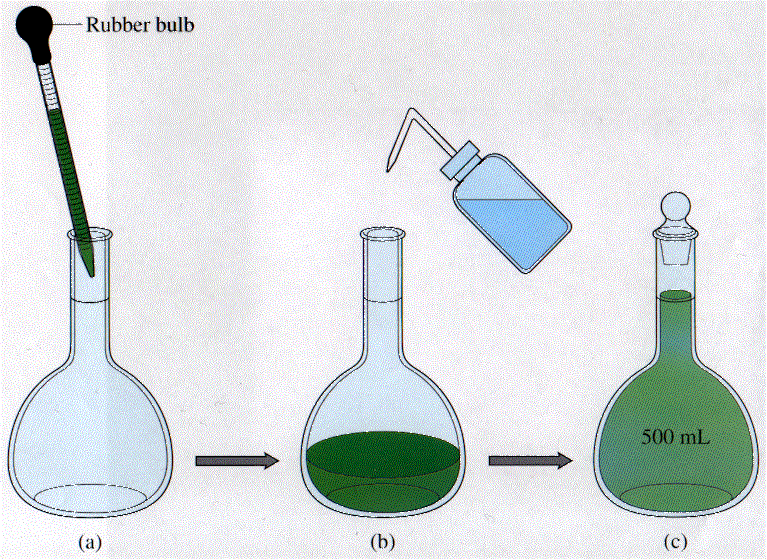How many milliliters of a solution of 4.00M #KI# are needed to prepare 250.0 mL of 0.760M #KI#?
1 Answer
Explanation:
What you're essentially doing here is diluting a concentrated solution of potassium iodide,
The most important thing to remember about dilutions is that the number of moles of solute must remain constant, i.e. the diluted solution will have the same number of solute as the sample of concentrated solution.
As you know, the molarity of a solution tells you how many moles of solute you get per liter of solution.
#color(blue)(|bar(ul(color(white)(a/a)"molarity" = "moles of solute"/"liter of solution"color(white)(a/a)|)))#
This means that you can decrease the concentration of a solution by increasing its total volume while keeping the number of moles of solute constant.
To increase the total volume of the solution, you would add solvent, which in this case is pure water.

The problem wants you to figure out what volume of concentrated solution will contain the same number of moles of potassium iodide as
So, use the molarity and volume of the target solution to find the number of moles of solute it must contain
#color(purple)(|bar(ul(color(white)(a/a)color(black)(c = n_"solute"/V_"solution" implies n_"solute" = c * V_"solution")color(white)(a/a)|)))#
Plug in your values to find - do not forget to convert the volume from milliliters to liters!
#n_(KI) = "0.760 mol" color(red)(cancel(color(black)("L"^(-1)))) * 250.0 * 10^(-3)color(red)(cancel(color(black)("L"))) = "0.190 moles KI"#
Now use the molarity of the stock solution to find what volume would contain this many moles
#color(purple)(|bar(ul(color(white)(a/a)color(black)(c = n_"solute"/V_"solution" implies V_"solution" = n_"solute"/c)color(white)(a/a)|)))#
Plug in your values to get
#V_"stock" = (0.190 color(red)(cancel(color(black)("moles"))))/(4.00color(red)(cancel(color(black)("mol"))) "L"^(-1)) = "0.0475 L" = color(green)(|bar(ul(color(white)(a/a)"47.5 mL"color(white)(a/a)|)))#
So, to prepare this solution, you would start with
This is the concept behind the formula for dilution calculations
#color(blue)(overbrace(c_1 xx V_1)^(color(black)("moles of solute in initial solution")) = overbrace(c_2 xx V_2)^(color(black)("moles of solute in diluted solution")))#
Here
Plug in your values to get the exact same result
#c_1V_1 = c_2V_2 implies V_1 = c_2/c_1 * V_1#
#V_1 = (0.760 color(red)(cancel(color(black)("M"))))/(4.00color(red)(cancel(color(black)("M")))) * "250.0 mL" = color(green)(|bar(ul(color(white)(a/a)"47.5 mL"color(white)(a/a)|)))#
The answer is rounded to three sig figs.

